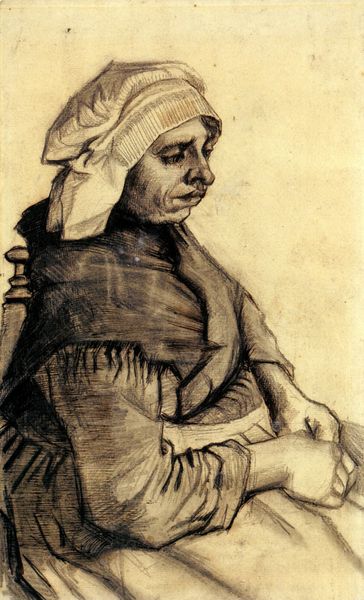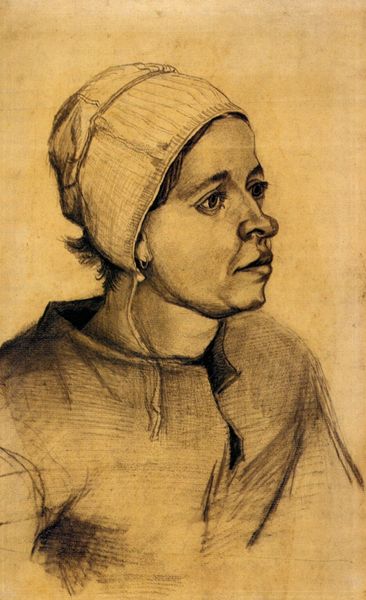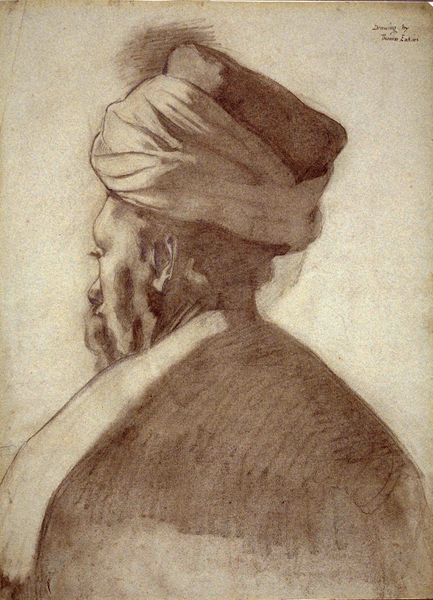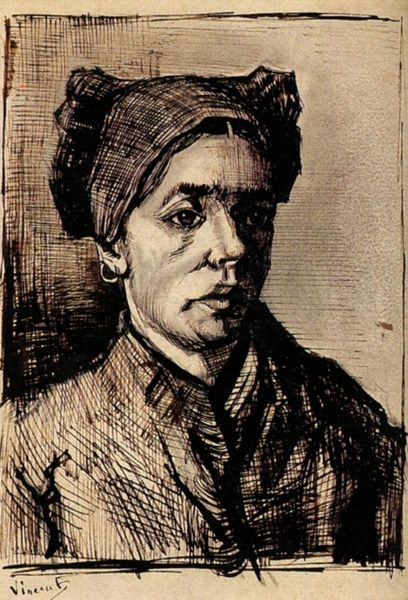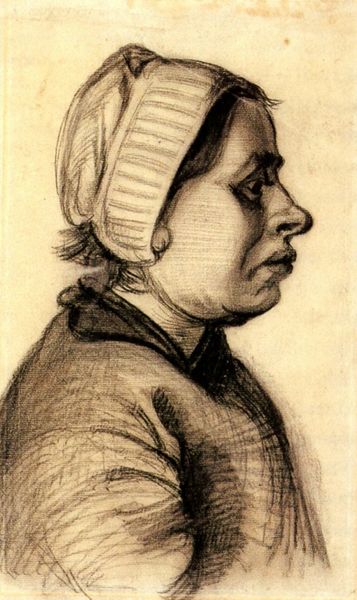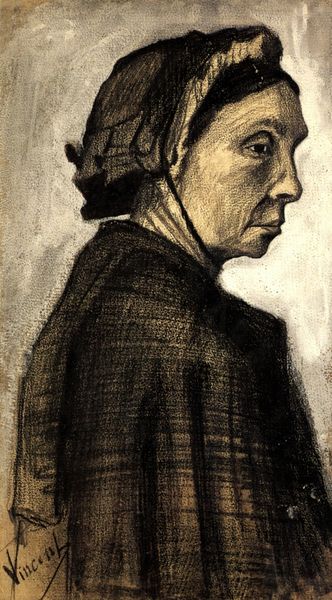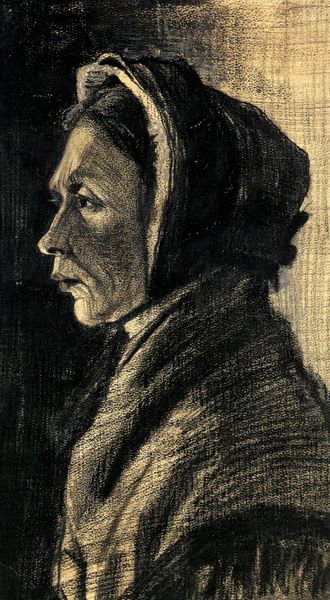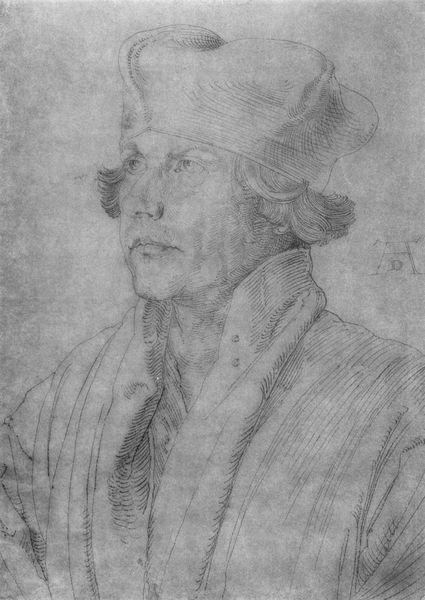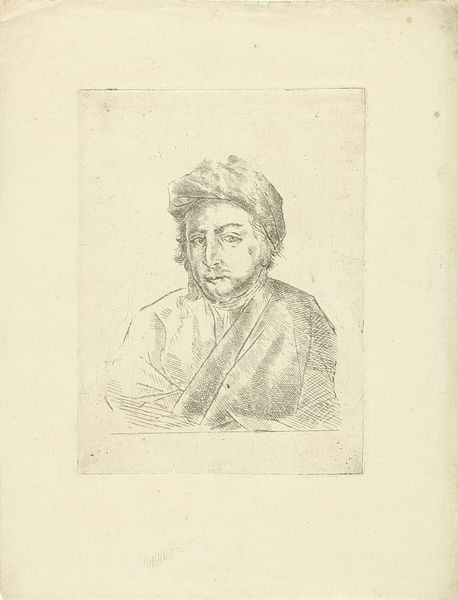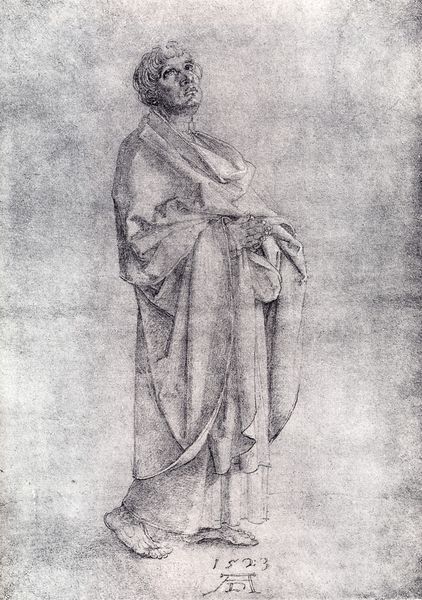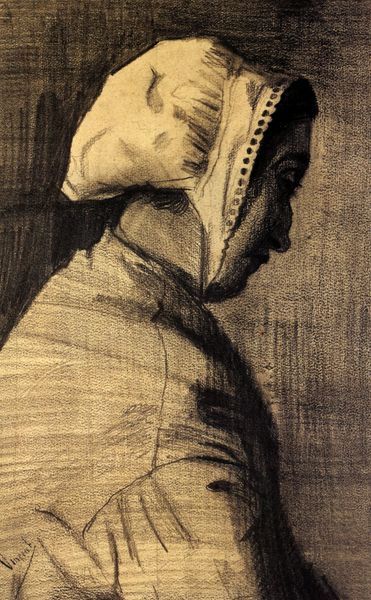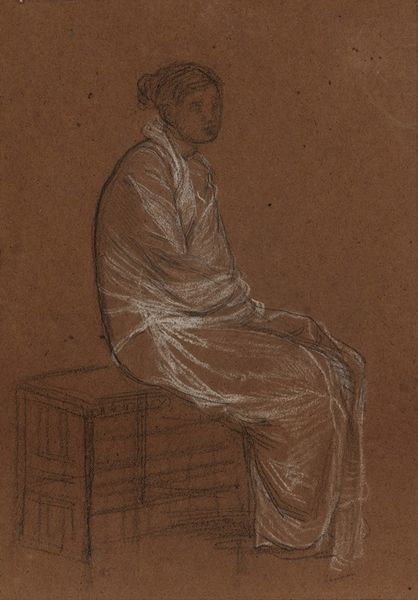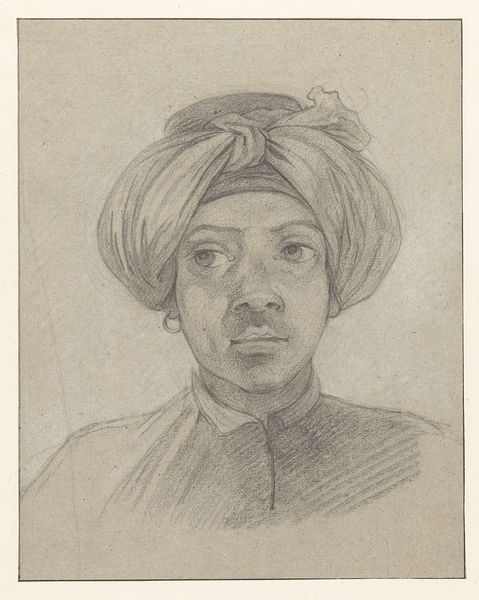
drawing, charcoal
#
portrait
#
drawing
#
charcoal drawing
#
charcoal
#
post-impressionism
Copyright: Public domain
Editor: Here we have Van Gogh's "Head of a Woman," a charcoal drawing from 1885. There's such intensity in this simple sketch; it feels very immediate and raw. What catches your eye when you look at this work? Curator: The angle, first of all. She's caught in profile, which traditionally denotes objectivity, almost like a specimen. Yet, look at the shadows beneath her eyes, the set of her jaw. Do you see defiance, maybe even a little grief there? Editor: I see what you mean. The way the charcoal is applied around the eyes definitely emphasizes those feelings. Curator: Precisely. Van Gogh, even in these early works, is so good at layering meaning through seemingly simple techniques. The hat, for example, is drawn very plainly, almost masking her individuality, but perhaps signaling something about her social standing, too? What might that signify to you? Editor: Maybe she’s a working woman? It’s not elaborate, just functional. And it’s interesting how the light catches it. Curator: Exactly! The play of light and shadow throughout the work creates a starkness. It highlights both the woman's resilience and her vulnerability. And the deliberate choice of charcoal over other mediums—it speaks of a certain earthiness, connecting her to the land, to toil, and to tradition. It seems like she's embodying some timeless struggle. Editor: I never considered the earthiness of charcoal before. Now it feels so connected to the subject. Curator: These early drawings from Van Gogh remind us that the human story is often written on faces, etched in light and shadow. Symbols exist in the mark making. Editor: That's a powerful way to look at it. Thank you! It’s changed my whole perspective.
Comments
No comments
Be the first to comment and join the conversation on the ultimate creative platform.
